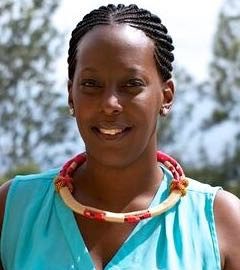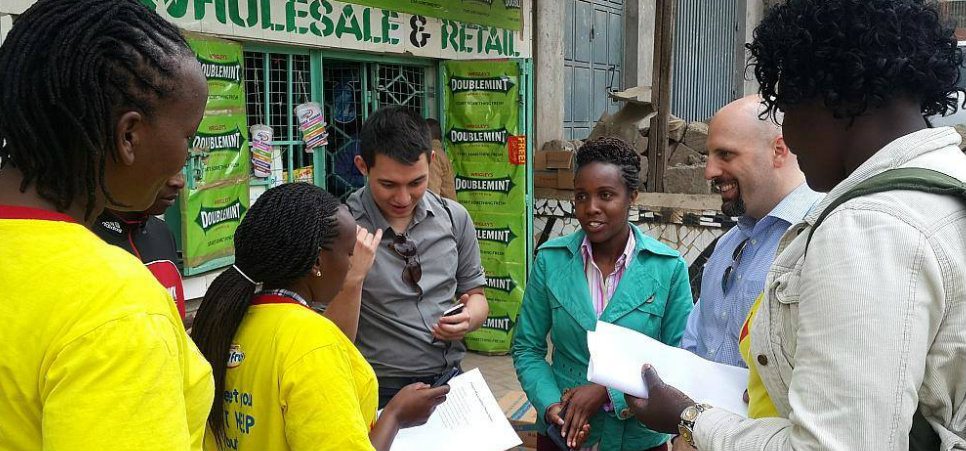This post was contributed by Sarah Hirshorn, intern at the Case Foundation.
With the endless barrage of advertising, sales, and deals, Black Friday can leave you feeling pressured to partake in the buying frenzy that begins after Thanksgiving. Many of us often end up overwhelmed with finding the perfect present for loved ones or ourselves. But hidden among the flat screen TVs and doorbusters, we know the best gifts are not only thoughtful and generous, but also give something back to the causes we care about the most.
To help you direct your holiday shopping needs, we’ve compiled a list of great gift options that also make a positive impact on you and the world. (And, you can order all of these online, so no standing in any lines at midnight, waiting for stores to open!) Whether you are looking to jump start your holiday shopping or treat yourself, we hope these diverse products help you become the toast of all your friends and family!
Don’t forget to share your favorite gifts that give back with us on Twitter or Facebook by using the hashtag #Gifts4Good.
NPR Listening Kit Party: This season, give the gift of listening. The Case Foundation has teamed up with NPR Generation Listen to launch the first ever NPR Listening Party Kit. Inspired by #GivingTuesday, this inaugural kit is giving themed and includes a curated collection of NPR stories that inspire dialogue around why people give, the future of philanthropy and people’s personal stories of giving. You’ll find everything you need to plan and host your own NPR Listening Party—we’ve even included conversation prompts, food and drink recipes and more to make sure your guests have an enriching and entertaining experience. Best of all, it’s free! Sign up now to be the first to get the kit when it debuts on December 1st. Listen for a cause.
100 Good Deeds Bracelets – These beautiful bracelets are designed so that every time you perform a good deed you can move the ring one bead closer to the button. In addition to spreading kindness, these bracelets are made by vulnerable women, many HIV+, who’ve been trained for this work in Uganda, Zambia, South Africa, Rwanda, Haiti, Bali, India and New York. Accessorize for a cause.
Bright Endeavors – Nothing says relaxation like some deep breathes nearby a lit candle. Bright Endeavors trains at risk mothers to craft premium soy candles in a supportive, professional environment. This group is a nonprofit social enterprise of New Moms Inc. that instills confidence, professionalism and responsibility into adolescent mothers. Unwind for a cause.
Cotopaxi – Getting into nature can be good for both mental and physical health. Cotopaxi creates innovative outdoor gear that funds sustainable poverty alleviation and aims to inspire adventure. Their business model enables their grantmaking focused on global poverty alleviation and represents a commitment to sustainable product design and charitable giving. Adventure on for a cause.
Indigenous Clothing – Indigenous clothes are great for your body and are made sustainably. The clothes contain only organic and natural fibers as well as low-impact dyes. In addition, they are certified fair trade so the hardworking individuals who made the clothes are treated with dignity. Dressing in Indigenous clothes and accessories helps you look beautiful inside and out! Dress for a cause.
Miir – Getting your blood pumping with a great bike ride is both exhilarating and good for your health. Miir bicycles are not only stylish, but they also help get bikes into the hands of those that need them most. In much of the world, biking is one of the most practical and affordable forms of transportation and the ability to get from point A to point B efficiently can change a life. Miir works internationally and in the US with partners to give new bikes, train mechanics and buy replacement parts. Bike for a cause.
RxArt– Coloring books are trendy for both youth and adults this Christmas. The Rx coloring book provides a therapeutic outlet for the artist. In addition, RxArt distributes free coloring books to partner hospitals. RxArt is a nonprofit organization whose mission is to help children heal through the extraordinary power of visual art. They commission exceptional contemporary artists to transform sterile healthcare facilities into engaging and inspiring environments full of beauty, humor and comfort. Craft for a cause.
Sweet Beginnings – Sweet Beginnings, LLC makes the family of beelove™ products, an all-natural line of raw honey and honey-infused body care products that are sourced from its natural urban apiary in the heart of the North Lawndale community in Chicago. Even further, Sweet Beginnings offers full-time transitional jobs for formerly incarcerated individuals and others with significant barriers to employment in a green industry. Moisturize for a cause.
S’well – S’well water bottles have been sweeping the market because consumers love that they can keep a beverage cold for 24 hours or hot for twelve hours. The company initially launched in 2010 with the mission to rid the world of plastic bottles. In the US alone, an estimated 50 billion plastic bottles are dumped in landfill sites each year, and over 200 billion globally. Even further, S’well, is a proud supporter of the US Fund for UNICEF, donating $100,000 to help provide clean water to the world’s most vulnerable children. Quench for a cause.
Theo Chocolate – Chocolate is a known source of antioxidants and mood boosting endorphins. Theo Chocolate makes the chocolate eating experience even sweeter because the artisan crafted bars are produced in an ethical and sustainable fashion. Currently, their current suppliers are Norandino in Peru, Esco Kivu in Democratic Republic of Congo (DRC) and Cocabo in Panama. Theo helps these businesses to thrive and succeed. Indulge for a cause.
Tom’s Roasting Company – With Toms, your friend’s morning cup of Joe will work to help individuals who do not have access to safe drinking water. TOMS Roasting Co. purchases support water systems in seven countries – in the same regions where they source their coffee beans. Drink for a cause.
Tory Burch Seed Box – The Tory Burch Foundation empowers women entrepreneurs by providing access to capital, education, networking events and an online resource hub. The Seed Box is one of several initiatives encouraging women to embrace ambition. This box includes a versatile towel, organic tea, watercolor pouch, travel candle and key fob. Enjoy for a cause.
And for the person who has everything already, consider a Network for Good or GlobalGiving gift card. These organizations make it easy to support the nonprofits and causes you care about. A donation to your family and friends’ favorite charities is one of the best gifts of all!
There are many simple and meaningful ways to give back on behalf of Mom, Grandpa or Cousin Stacy this year. Share your favorite gifts that give back with us on Twitter or Facebook using #Gifts4Good.

 Prior to launching her own company, Caudliss Trading T/A Nutrie Foods, Nobukhosi Ndlovu worked as a Human Resources Consultant. She started Nutrie Foods with a mission – satisfy the Zimbabwean market’s domestic consumption requirements through efficient, effective manufacturing technologies and dedicated staff. Nutrie Foods manufactures and packages peanut butter, kapenta fish and salt. However, their ambitions don’t stop there; in the next two years they will begin manufacturing and distributing scouring powder, jam, cooking oil and fruit, with plans for greater expansion over the next five years.
Prior to launching her own company, Caudliss Trading T/A Nutrie Foods, Nobukhosi Ndlovu worked as a Human Resources Consultant. She started Nutrie Foods with a mission – satisfy the Zimbabwean market’s domestic consumption requirements through efficient, effective manufacturing technologies and dedicated staff. Nutrie Foods manufactures and packages peanut butter, kapenta fish and salt. However, their ambitions don’t stop there; in the next two years they will begin manufacturing and distributing scouring powder, jam, cooking oil and fruit, with plans for greater expansion over the next five years. Linda Mukangoga is one of two young female Rwandan designers who founded Haute Baso. Linda was born in Washington, DC, to Rwandan parents. Linda spent time between the US and Rwanda and finally settled permanently in Rwanda to work for Gahaya Links, a company that trains rural women in the production of artisanal crafts for international markets. After participating in the design and distribution of pieces that were carried in large, international retail chains including Anthropologie and Macy’s, Linda was empowered by the belief that there is a market to showcase Rwanda globally while creating employment opportunities for the girls she works with. From this belief, Haute Baso was born – a Rwandan ethical fashion brand.
Linda Mukangoga is one of two young female Rwandan designers who founded Haute Baso. Linda was born in Washington, DC, to Rwandan parents. Linda spent time between the US and Rwanda and finally settled permanently in Rwanda to work for Gahaya Links, a company that trains rural women in the production of artisanal crafts for international markets. After participating in the design and distribution of pieces that were carried in large, international retail chains including Anthropologie and Macy’s, Linda was empowered by the belief that there is a market to showcase Rwanda globally while creating employment opportunities for the girls she works with. From this belief, Haute Baso was born – a Rwandan ethical fashion brand. Annet Ayamba is from Kampala, Uganda and holds a Bachelors of Art in Education from Makerere University. Annet founded Your Choice Agro Processors in 2000 with just $200, and has since accelerated the company’s growth and market share, becoming the head of a leading agriculture processor in Uganda. Your Choice Agro Processors produces millet, cassava, maize, honey, rice and soybeans. Annet’s five-year plan includes expansion regionally with a focus on Kenya and internationally with increased global sales.
Annet Ayamba is from Kampala, Uganda and holds a Bachelors of Art in Education from Makerere University. Annet founded Your Choice Agro Processors in 2000 with just $200, and has since accelerated the company’s growth and market share, becoming the head of a leading agriculture processor in Uganda. Your Choice Agro Processors produces millet, cassava, maize, honey, rice and soybeans. Annet’s five-year plan includes expansion regionally with a focus on Kenya and internationally with increased global sales.